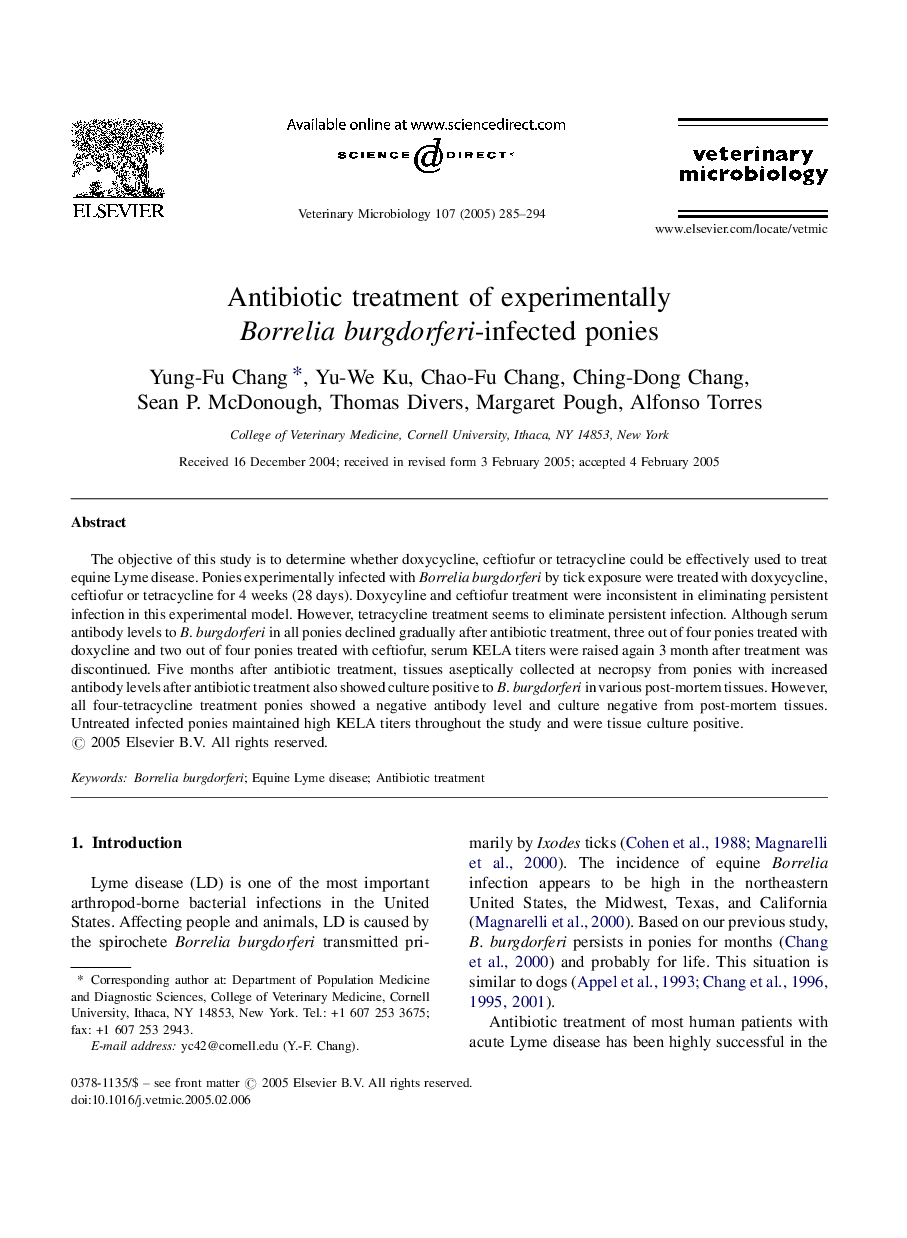| Article ID | Journal | Published Year | Pages | File Type |
|---|---|---|---|---|
| 8989708 | Veterinary Microbiology | 2005 | 10 Pages |
Abstract
The objective of this study is to determine whether doxycycline, ceftiofur or tetracycline could be effectively used to treat equine Lyme disease. Ponies experimentally infected with Borreliaburgdorferi by tick exposure were treated with doxycycline, ceftiofur or tetracycline for 4 weeks (28 days). Doxycyline and ceftiofur treatment were inconsistent in eliminating persistent infection in this experimental model. However, tetracycline treatment seems to eliminate persistent infection. Although serum antibody levels to B. burgdorferi in all ponies declined gradually after antibiotic treatment, three out of four ponies treated with doxycline and two out of four ponies treated with ceftiofur, serum KELA titers were raised again 3 month after treatment was discontinued. Five months after antibiotic treatment, tissues aseptically collected at necropsy from ponies with increased antibody levels after antibiotic treatment also showed culture positive to B. burgdorferi in various post-mortem tissues. However, all four-tetracycline treatment ponies showed a negative antibody level and culture negative from post-mortem tissues. Untreated infected ponies maintained high KELA titers throughout the study and were tissue culture positive.
Keywords
Related Topics
Life Sciences
Agricultural and Biological Sciences
Animal Science and Zoology
Authors
Yung-Fu Chang, Yu-We Ku, Chao-Fu Chang, Ching-Dong Chang, Sean P. McDonough, Thomas Divers, Margaret Pough, Alfonso Torres,
